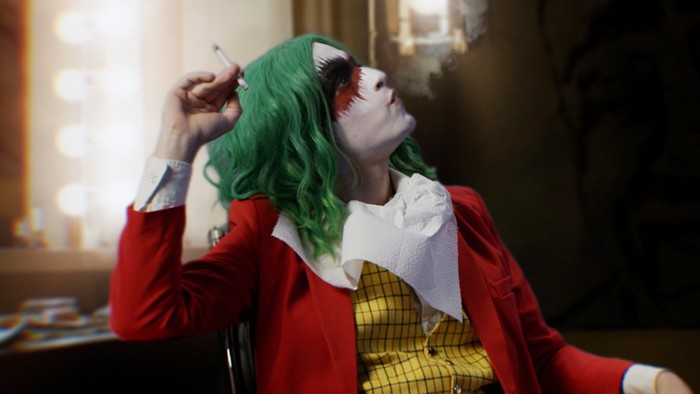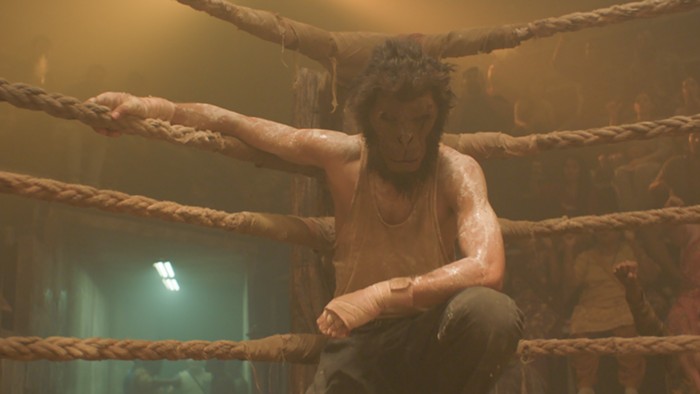Dune: Part Two is large. This is nothing new—Dune: Part One was large too. Largeness is much of the point of Denis Villeneuve’s Dune films, based on Frank Herbert’s 1965 chode of a sci-fi novel, which was inspired by the author’s stint studying the ecology of sand dunes near Florence, Oregon, plus several mushroom trips. The book is a lot, and Villeneuve has responded in kind. It’s a miracle he pulled it off at all.
Myth-thick, humorless, and bone-dry, Herbert’s Dune is not kind to adaptations. The story of one rich white boy’s ascent to genocidal space messiah, the book chronicles how young Paul Atreides, heir to a great space fortune, builds power on the metaphorical backs of the Fremen, the indigenous people of the desert planet Arrakis, the source of an invaluable natural resource called “spice” that fuels all space travel throughout the universe. He also builds power on the literal backs of orifice-tipped sandworms the size of skyscrapers. Meanwhile, a sect of pseudo-spiritual space nuns create potential genocidal space messiahs through countless generations of selective breeding in each of the prominent Houses ruling a defiantly feudal distant future spanning vast amounts of planets and cultures. There is political intrigue, people with computer brains, trade unions with armies, hallucinogenic revelations, weirdly mature toddlers, and just so many really big spaceships—it’s both blessing and curse that Herbert left so much for any adaptation to wade through. Even told in two parts, Villeneuve cuts out quite a bit.
Following the mass-murder of House Atreides in 2021’s Part One, leaving only a few survivors to flee into the desert, Part Two picks up a few months later, with the evil, hairless House Harkonnen attempting to re-establish spice mining on Arrakis. Paul Atreides (Timothee Chalamet), balking at rumors he’s the prophesied savior who will deliver the Fremen from their oppressors, assists in leading violent raids on Harkonnen spice miners, learning the ways of desert power from elder Stilgar (Javier Bardem) and falling in love with fellow Fedaykin warrior Chani (Zendaya).

While more and more Fremen are impressed by his skills in battle and feats of sandworm surfing, Paul denies the prophecy, even though his mom Lady Jessica (Rebecca Ferguson), member of the aforementioned sect of space nuns, refuses to drop it. The unborn fetus she carries, able to communicate with her mother telepathically, won’t shut up about it either. Even the pendulous Baron Harkonnen (Stellan Skarsgård) hears of Paul’s exploits, assigning his nephew and S-tier psychopath Feyd-Rautha (Austin Butler) to eradicate the Fremen once and for all. Like Paul, Feyd-Rautha is a guinea pig messiah bred by the space nuns; unlike Paul, Feyd-Rautha’s bone-white pate and blackened teeth scream absolute menace.
Again: it’s a lot. But Villeneuve balances the minutiae of world building with the magnificence of space opera spectacle. Small, quiet moments and subtle performances—especially Zendaya’s, whose Chani is an emotional anchor to Paul’s burgeoning megalomania and Chalamet’s increasingly sinister turn—make really big spaceships seem bigger. If the obligatory bigness of the modern blockbuster, the realm of cinematic universes and overworked special effects houses, has pretty much numbed audiences to wonder, then Villeneuve grasps a breathless sense of scale. Where Part One established the splendor of watching a lot of people walk out of really big spaceships, Part Two wields that splendor viscerally.
When Paul hitches a ride on his first sandworm, the sound in the theater is near overwhelming. When a climactic battle begins with a calvary of sandworms attacking a platoon of shock troopers, the audience remembers the sensation of Timothee Chalamet accomplishing the impossible. They immediately understand the stakes. When the Harkonnens blow apart ancient Fremen architecture with admittedly cool lasers, the size of what is lost weighs heavy. These spaceships and sandworms and brutalist architecture can not only appear large, they have to feel large. Villeneuve and cinematographer Greig Fraser make everything an exercise in awe. Hans Zimmer’s score accommodates blaringly.
Maybe it’s ironic that a long studio epic about preserving precious bodily fluids to survive the unforgiving desert also expects you to not pee for nearly 170 minutes. Maybe that deep burn to survive is part of the experience. Regardless, Dune: Part Two should be seen in a theater. Hold your water like a good Fremen, because you won’t want to miss a thing. The film looks unbelievable.
Dune: Part Two will be widely released to theaters on Thurs, Feb 29.



















